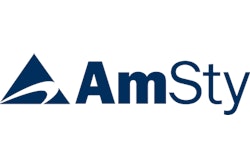Quick hits:
- The mix between cans and bottles is changing, and the ascendence of cans has only intensified over the pandemic as in-restaurant (keg, draft) opportunities diminished, and in-home purchase of higher volumes increased.
- Aluminum recycling is particularly fast, and a recycled can of Bud can show up back in a Budweiser facility in the form of a printed coil as quickly as two weeks after a consumer recycles it
- Anheuser Busch has a vertical markets division that runs can- and bottle-making facilities meant to keep their can and bottle suppliers honest. But the company doesn’t consider it a core competency, and doesn’t want to get into a fully vertical business.
- What’s next for Bud? Your guess is (almost) as good as Ken VonderHaar’s
- Live at the Craft Brew Conference: Is the Pint Glass Half Full or Half Empty?
- Budweiser Busts out Patriotic Cans for ‘Historic Summer’
 | Read the transcript below: |
Matt Reynolds: Hi, I'm Matt Reynolds, editor at Packaging World Magazine, back with another edition of Take Five. Today I'm here in St. Louis at the Anheuser Busch facility where I sat down with Ken VonderHaar of Budweiser and Anheuser Busch and asked him about some of his big packaging challenges these days. Here's what he had to say.
Anheuser Busch does both a high volume of glass and a high volume of cans, both are recyclable. How do you think about your balance of cans and glass in terms of sustainability?
Ken VonderHaar: Well, we, right now, the mix shifted a lot during the COVID, where we had about 40% glass and 60% cans, and some percent was kegs. And of course, during the COVID, all the bars shut down, and venues shut down. So everybody was taking your 30 packs of cans home. So that's shifted a little bit more to higher than 60% cans, but predominantly cans have the higher volume, cans are continuing to trend up in volume traditionally, COVID accelerated that. And so cans is going to be, it looks like, the biggest growth package for us moving forward.
Matt Reynolds: Anheuser Busch has both can-making and bottle-making capabilities in what you call your vertical operations. But not your own lone supplier of these containers. Most in fact, come from traditional tin bottle suppliers out there. Why is that? And what's your relationship like with cannon bottle suppliers when it's something that you could do as well?
Ken VonderHaar: Well, we want to have a robust vertical operation, primarily to control cost and quality for our other suppliers. So when when our metal container division was, was established in the early 1970s, it was primarily to control the quality of the product. We were not getting good quality from our other suppliers, and we wanted to do it ourself. But it also gave us insight into the cost to make the product and then therefore what kind of margins should be on that product. And really, what our vertical operations does is it not only gives us surety of supply for some of the commodities that are in tight supply, like a can or a bottle right now. But more importantly, it gives us the the ability of managing our contract costs when we buy from other folks. So the whole business model of vertical operations is not to grow that as fast as the beer company grows. It's to grow that with enough critical mass such that the other suppliers would say, hey, I need to be cost competitive on this otherwise, Anheuser Busch will build their own.
Matt Reynolds: In terms of the circular economy and recycling, we've talked about a circumstance where the contents of a can are consumed, the can is recycled by the consumer, and then that same material is back on your lines within two weeks. That doesn't happen here, correct?
Ken VonderHaar: No, that's correct. So once the consumer recycles the can, it'll go back to the smelter. And the turnaround time with these operators is very short, or can be very short, to the point where they can turn it into a coil and just a matter of days, and get that coil back to us. And if we make a can in our can plant down in Arnold, 30 miles south here of St. Louis, we will typically fill it within a day of it being made and then it'll be on the market within a couple of days after that. So it can be a very quick turnaround time. Obviously it depends on the aluminum supplier and when he wants to try to put recycled product into his work stream there. But but it can be a very quick turnaround and it's infinitely reusable.
Matt Reynolds: What's the next big thing coming from Budweiser on the packaging front?
Ken VonderHaar: I wish I knew. We have the aluminum bottle, which was a nice innovative package. It's it sells a lot. It's not high volume seller. We have a lot of new innovation and it's been primarily around the package and the flexibility around the different types of packages. So you will see us introducing here in the next say year or so, a completely new package for a machine that was developed in house by A B, that will be introduced into the market for some secondary packaging for bottles.
Matt Reynolds: As you can see, there's been a lot going on in the beer industry when it comes to packaging. That's all the time we have for this Take Five.


























